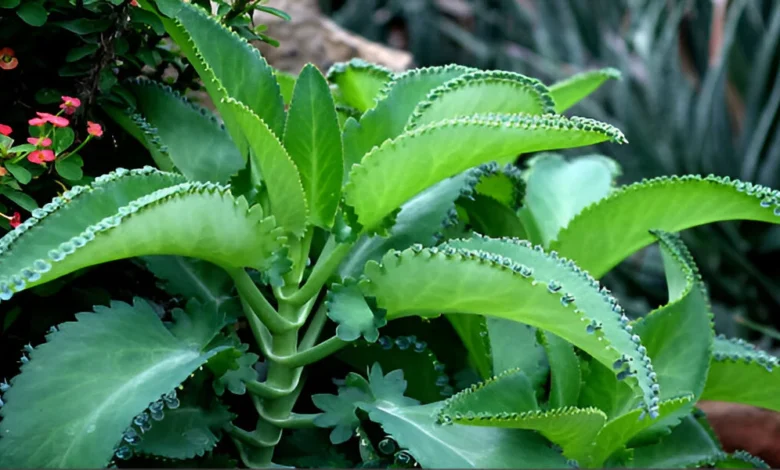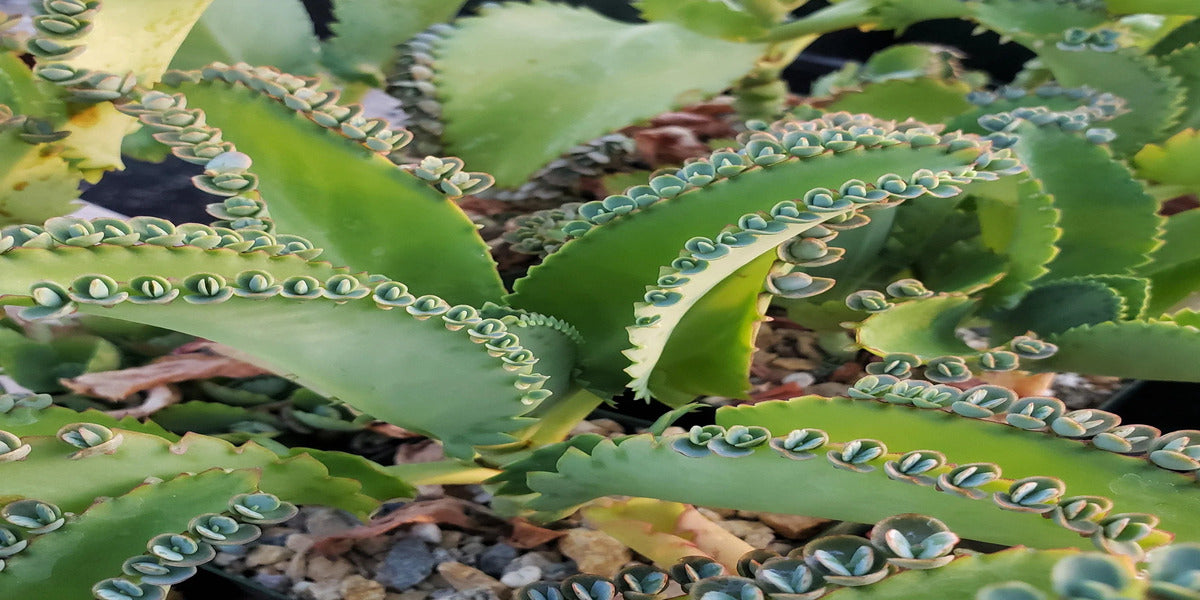Mother of Thousands: A Fascinating Succulent with a Rebellious Twist

Mother of Thousands: A Fascinating Succulent with a Rebellious Twist
What is the Mother of Thousands?
The Mother of Thousands (Kalanchoe daigremontiana) is a truly remarkable succulent that lives up to its name. Originating from Madagascar, this plant is known for producing tiny plantlets along the edges of its leaves—each one ready to drop off, root itself, and grow into a new plant. That’s how it earned its dramatic title. It’s as if one single plant has the power to multiply into thousands, almost like a natural cloning machine!
It’s not just the plantlets that make it stand out. The Mother of Thousands has thick, blue-green leaves with purplish undersides and serrated edges, making it visually unique. Indoors or out, it’s a conversation-starter. It has a sort of alien charm that makes it ideal for people who love unusual houseplants or are looking to expand their succulent collection beyond the typical rosettes.
While the plant is beautiful, it also has a bit of a wild side. It’s known for being quite invasive if not contained properly. Once it starts producing baby plants, it’s hard to stop. That’s why it’s both loved and feared in gardening communities—especially in tropical or warm climates where it can easily escape into the wild.
Caring for the Mother of Thousands
Taking care of a Mother of Thousands plant is surprisingly easy. Like most succulents, it prefers bright, indirect light. A sunny windowsill is usually the best spot indoors. However, it can also tolerate some direct sunlight, especially during the cooler parts of the day. Just be cautious of too much sun exposure, which can cause leaf scorching.
When it comes to watering, the golden rule is: less is more. Overwatering is the most common way people kill this plant. Its thick leaves store plenty of moisture, so it doesn’t need frequent watering. Always allow the soil to dry out completely between watering sessions. Use well-draining soil—preferably a cactus or succulent mix—and a pot with drainage holes to avoid root rot.
Temperature-wise, the Mother of Thousands thrives in normal indoor conditions but doesn’t like cold weather. If you live in a region that gets frost, keep it indoors or bring it in during the colder months. It’s not frost-hardy and will suffer if left out in freezing temperatures. With a little attention and minimal care, this plant can thrive for years and keep producing new life constantly.
Propagation: It Does Itself!

One of the coolest things about the Mother of Thousands is how effortlessly it propagates. Those tiny plantlets that form along the leaf margins are mini versions of the plant, complete with tiny roots. When they fall off the leaf, they often root themselves in the soil with no help from you. You could almost ignore it for weeks and still end up with a pot full of new plants.
If you want to take a more controlled approach to propagation, you can collect the plantlets yourself and place them on moist soil in a separate pot. Mist them lightly, keep them warm, and in a few days to a week, you’ll see roots developing. It’s a fun and rewarding process, especially for beginners looking to dip their toes into plant propagation.
That said, this “self-propagating” ability is both a blessing and a curse. If left unchecked, you could end up with dozens of plants taking over your garden, patio, or even windowsill. Many gardeners choose to trim back mature plants or remove the plantlets manually to control their spread. Otherwise, it’s easy to become overrun by this overachiever.
Is It Safe to Have Around Pets and Children?
While the Mother of Thousands is stunning and easy to care for, it’s important to know that it is toxic if ingested. It contains compounds known as bufadienolides, which can cause vomiting, diarrhea, and even more serious symptoms in pets and small children. That’s why it’s best kept out of reach if you have curious cats, dogs, or toddlers in the house.
The level of toxicity varies depending on the amount consumed, but it’s always better to be safe than sorry. Many responsible plant parents place their Mother of Thousands on high shelves or in hanging baskets to keep them out of harm’s way. If you’re someone who’s juggling plant life with pet life, just make sure you take a few extra precautions.
Don’t let this discourage you from owning one. Like many popular houseplants (e.g., pothos, snake plant, philodendron), mild toxicity is common, and with proper placement, there’s little risk. Just be aware, and you can enjoy its beauty without worry.
Fun Facts and Cultural Trivia
The Mother of Thousands goes by many names, including “Mexican Hat Plant,” “Devil’s Backbone,” and “Alligator Plant.” Each nickname reflects something unique about its appearance or behavior. For instance, the “Mexican Hat” name refers to how the baby plantlets sometimes look like a ring around the mother plant, almost like a brim.
Culturally, this plant has been both admired and feared. In traditional medicine, it’s sometimes used for its alleged healing properties, although modern science hasn’t thoroughly backed these claims. Some communities view it as a plant of fertility or abundance because of how many offspring it produces.
Gardeners also debate its place in landscapes. In tropical climates like Florida or parts of Australia, it’s often classified as an invasive species due to its fast-growing and spreading nature. However, in colder or drier areas, it’s easily contained and makes a great ornamental plant. Its resilience and propagation magic make it ideal for classrooms, plant swaps, or DIY gifts.
Final Thoughts: Is It the Right Plant for You?
If you’re looking for a low-maintenance, eye-catching, and somewhat magical plant, the Mother of Thousands might be exactly what you need. It’s perfect for beginners who want quick wins with plant propagation, and it offers a lot of visual interest. However, it’s not the best choice if you’re looking for a “set it and forget it” type plant—because it tends to grow wherever it wants!
Its quirky looks, unique way of reproducing, and bold personality make it a standout addition to any plant lover’s collection. Just remember to give it the right amount of light, avoid overwatering, and keep it away from curious pets or children.
At the end of the day, the Mother of Thousands is more than just a plant—it’s a living, growing story of how life can multiply and flourish with just a little care. And if you’re ready for the responsibility, she’ll reward you with more babies than you’ll know what to do with!



